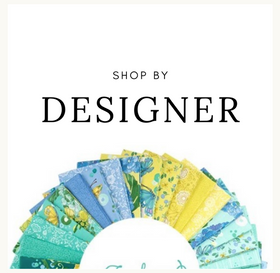
Working with Contrast featuring Kaffe Fassett Fabrics
We love color here at Birdsong Quilting! The patterns and colors you choose to include in your quilt are a way to share your personality or to convey a feeling. Feeling overwhelmed when it comes to picking fabrics is not uncommon. Today we’re going to talk a little about color theory to help you be more confident in choosing a palette that pops!
Color Theory Terminology
Color theory classes can be quite intensive and lengthy, but we’re keeping things simple here. When we talk about value, we are referring to the lightness and darkness of each color. The primary colors (red, blue, and yellow) in their purest form are often referred to as hues. A hue can be made lighter by adding white (tint), darker by adding black (shade), and complemented by adding grey (tone).
Check Values with the Monochrome Photo Setting
Did you know you can use the camera on your phone or tablet to help you pair fabrics? Gather your fabrics and take a photo. In the photo application, edit the photo to the “monochrome” setting. This feature makes it very easy to see the lighter and darker values of each print. You may be surprised! Play around and experiment by adding various lights, mediums, and darks to the fabric palette.

Kaffe Fasset’s designs are wonderful to use for this exercise. Using the Embroidered Shawl fabric, shown above, from left to right, we have a red flower, a red flower in greyscale, a grey flower (no need to put this in greyscale), and a blue flower. We did not put the blue flower in a greyscale as it would match the grey flower and the red flower in greyscale.

Let’s take a look at the grey flower print next to Primulas in Periwinkle, a lighter shade - in color (left) and in greyscale (right).

Here’s another example: the blue flower print next to Spots in Mauve, a lighter shade - in color (left) and in greyscale (right). Look at that contrast!

Let’s take another look at Kaffe’s House Leeks in Natural (color on the left, monochrome on the right). The beautiful thing about Kaffe’s designs is he puts the different values in his prints so we, the end user, don’t have to struggle with it. The “movement” of your eyes across the quilt will automatically happen!
Have fun playing around with different pairings of fabrics and know that we can’t wait to see what you create! If you find you need a little guidance, or an opinion on a palette, we’re here to help.


